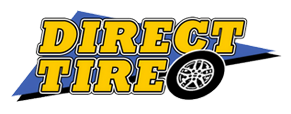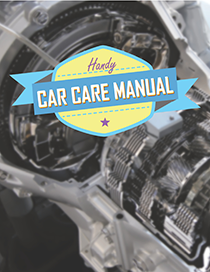Let us know how we did last visit!
Tire Features
Tire Characteristics
Following your vehicle manufacturer's recommendations is the best way to the find tires that are best for your vehicle. The basic tire characteristics to consider include: tread type, tire size, and tire class.
Tire Tread – Tread type selection depends on the type of roads or terrain you travel. Tread patterns available include multi-directional, asymmetric, directional, all-terrain, highway, and more, each offering differing performance benefits.
Tire Size – Tire size is determined by section width, aspect ratio, and wheel diameter. Following manufacturer specifications will assure the best fit and performance for your vehicle.
Tire Class – Choose tire class according to how you use your vehicle and where you use it. In regions that experience a variety of weather conditions, an all season tire is a great choice, but if you live where snow and ice occur frequently, you will need a winter class. For comfort and handling, a touring class tire will be ideal.
Direct Tire Distributors Inc. will make your shopping simple! Our experts will help you find the best tires to suit your vehicle, driving needs, and price needs.
Tire Maintenance
The surest way to protect your tire investment is by achieving longer wear and tread-life through the recommended schedule of maintenance. Thorough tire maintenance assures proper wear, longer life, and substantially improves the safety of your vehicle.
- Tire Rotation – Tire rotation is essential in promoting even tread wear. Different types of rotational patterns will be more beneficial than others, depending on the type of vehicle and tread wear pattern. Tire rotation performed by automotive professionals will provide this service as well as the opportunity to detect other issues before them become serious problems.
- Tire Pressure – Correctly inflated tires assure even tread wear through equal weight distribution in the vehicle. Proper tire pressure is crucial for dependable handling, reliable traction, and longer tire life. Variables such as temperature change and leaks can affect tire pressure so it is important to check it frequently.
- Wheel Alignment – Improper wheel alignment leads to issues such as poor vehicle handling and steering, as well as rapid and uneven tread wear. A number of problems can affect alignment including an accident, even if there is no visible body damage. Monitoring your alignment regularly will prevent problems down the road.
Consult your vehicle owner’s manual for manufacturer guidelines regarding proper maintenance. We will help you take care of your tires and your vehicle, with expert auto services when you need them.
Tires 101
Introduction
Tire Components
We don't often think about our tires until we need to repair or replace them, although as drivers and passengers our safety depends on them. Taking the time to learn about your tires will help you understand what you can do to prolong the life of your tires and enhance tire performance and safety. While our Tires Basics section will not make you a tire expert, it will give you a basic tire overview and get you more familiar with your tires.
Today's tire technology combines concepts of physics working with advances in engineering and chemistry. Innovative designs allow for the best in performance, fuel efficiency, ride comfort, safety, and reliability. Beyond basic performance, tires are now developed to meet specific vehicle demands, or perform well in harsh weather climates.
A variety of element make up tires, which are assembled in a TBM, or Tire Building Machine. Tires are cured and finished to detailed specifications following assembly. The essential components of a tire include:
- Bead, giving the tire gets its strength, is a loop of high-strength, rubber coated cable. It allows the tire to stay mounted on the wheel rim and withstand mounting machine pressure.
- Body Ply is made up of multiple plies or layers of fabrics, rubber coated to seal in air and assure tire element bonding. Fabrics strength is indicated by the number of tire body plies.
- Belt Package includes bands of steel, which reinforce the area under the tread. Steel belt advantages include greater puncture resistance and better road surface contact.
- Sidewalls are the thick rubber section that creates lateral stability, protecting the tire with good resistance to abrasion. Sidewalls are where the raised identification letters are applied.
Learn more about tires:
Tire Specification Code | Monitoring Tire Tread Depth| Tire Types
Tires Basics - Tire Specifications
While checking your tire pressure, you might have noticed the alphanumeric series on the side of each tire that looks something like this: P205/55R16 89H. What looks like a random combination of letters and numbers can actually tell you a great deal about your tires if you learn this code of specifications, which is largely universal for all tire manufactures. This code reveals the tire type and its performance characteristics.
Type
P205/55R16 89H
Kind of tire and the use intended are designated by the first letter in the code. Letter codes include P primarily for passenger vehicles, T for temporary spare, LT for light truck metric, C for commercial, and ST for special trailer service. Euro-metric tires do not include this first letter descriptor.
Section Width
P205/55R16 89H
Right after the first alpha character is the section width of the tire, which is listed in millimeters. This is the widest point from sidewall-to-sidewall, so a larger number indicates a wider tire. In this case, the tire has a width of 205 millimeters.
Aspect Ratio
P205/55R16 89H
The number after the slash mark is the aspect ratio, which is a percentage that reflects the height of the tire from the bead to the top of the tread. Here the number is 55, which means the tire height is 55% of the section width of 205 millimeters. The height of this tire would be 133.25 millimeters. A lower number means the tire profile is lower.
Tire Construction
P215/70R16 100S
The letter that follows the aspect ratio indicates the construction of the tire. The most typically seen designation is R, which stands for radial construction. Other less common construction types for modern passenger cars may include D for bias ply construction and B for belted tires.
Wheel Diameter
P205/55R16 89H
Just after the construction code is the size in inches of the wheel that the tire will fit. This tire would be manufactured to fit a 16-inch wheel. Tire sizes on modern vehicles typically start at 13-inches and go up to 18-inches, and custom wheels can be 22-inches or larger.
Performance Index
P205/55R16 89H
The last number to appear to appear is the tire performance index. It follows the wheel diameter and represents the tire's load and speed ratings. A 89 load index, for example, represents 1,279 pounds (per tire), and the speed rating of H represents 130 mph. Speed rating tends to be more important in countries with roadways that are not subject to speed limits.
| Common Speed Ratings | |||||||||||
|---|---|---|---|---|---|---|---|---|---|---|---|
| Letter | L | M | N | P | Q | R | S | T | U | H | V |
| Max. MPH | 75 | 81 | 87 | 93 | 99 | 106 | 112 | 118 | 124 | 130 | 149 |
Measuring Tread Depth
A “Cents”-able Way to check your Treads
Adequate tire tread depth has a significant impact on your vehicle’s performance, handling, and safety. Proper tire tread depth affects the traction of your tires and assures dependable grip on the road. US law requires tire manufacturers to include plainly visible tread wear indicator bars on all tires. Since these bars can be difficult to see until the tread is well worn, it is a good idea to regularly measure tire tread depth. An easy way to monitor the safety of your tires is with the simple penny test:
- Position the penny so that "In God We Trust" appears across the top. Push it into five different areas of the tire grooves, noticing the visibility of Lincoln's head.
- If you can easily see the top of Lincoln's head, the treads are excessively worn, and you need a new set of tires.
- If the top of Lincoln's head (to about the forehead hairline) is covered throughout the tread grooves, the tread is in good shape and your tires probably do not need replacement.
Keeping an eye on tread depth and wear is a critical step in car maintenance, not only to make sure that tire tread is in good shape, but also to check for symptoms of other problems such as:
- Over inflation of tires - extreme wear in the center of the tread
- Under inflation of tires – excessive wear on tire shoulders
- Poor wheel alignment – uneven tread wear
Protect your tire investment and stay safe on the road with this little common “cents” test.
Learn more about tires:
Tire Components | Tire Specification Code |Tire Types
Types of Tires
When it comes to selecting tires, choosing a reputable brand is just one consideration. You also need to pick the right type of tires for your specific vehicle. There are many types of tires available, suited to a variety of driving conditions. It is important to choose the tires that best meet your particular driving needs.
Summer Tires
Summer tires deliver the over-all best performance in mild climates and seasons, providing a performance level above all season tires. As the name implies, summer tires are not meant for driving in snow and ice, but handle well on dry and wet roads in mild temperatures. Unlike those used in winter tires, the softer compounds used in summer tires, become harder in colder temperatures. Offsetting the enhanced performance of summer tires is the drawback of a shorter life span and more rapid tread wear.
Winter Tires
Gripping edges for better handling on snow and ice distinguishes the tread of winter tires from all season tires. Winter tires are usually developed with a softer rubber compound that remains flexible in extreme cold. Though good for cold temperatures, winter tires are not the best for driving performance on cleared roads. They have a tendency to not grip as well as all season tires and wear more quickly. Winter tires should be used during extreme cold weather driving conditions, and should be installed in sets of four for balanced handling and braking in snow and icy conditions.
All Season Tires
A widely used and versatile tire, all season tires have an S or T speed rating. Sedans and minivans most often have all season tires installed. All season tires handle most conditions well, from dry pavement to wet weather and moderate snow. All season tires features include a comfortable and quiet ride, dependable handling, and extended tread life. For year-round traction in most climates, all season tires are a solid choice, except where winter weather tends to be severe.
Run-Flat Tires
A self-supporting type of tire, run-flat tires can be used on passenger cars as well as light trucks. They are developed with much thicker sidewalls than conventional tires, so run-flat tires are able to support the weight of the vehicle even when deflated. Run-flat tires can be driven on without air pressure for 50-200 miles at 50-55 MPH (depending on the tire) while maintaining the same basic level of ride comfort and handling. Vehicles using run-flat tires must be equipped with a tire pressure monitoring system because any loss of air pressure would go unnoticed by the driver. If run-flat tires are left on a vehicle too long without the proper tire pressure, they will be permanently damaged.
Learn more about tires:
Tire Elements | Tire Specification Code | Monitoring Tire Tread Depth
-

-

Apply here!
-

Read what our customers say.
-

Helpful Tips & Advice
Deals, tips, event details and more
Get exclusive access to them all when you sign up for our newsletter





